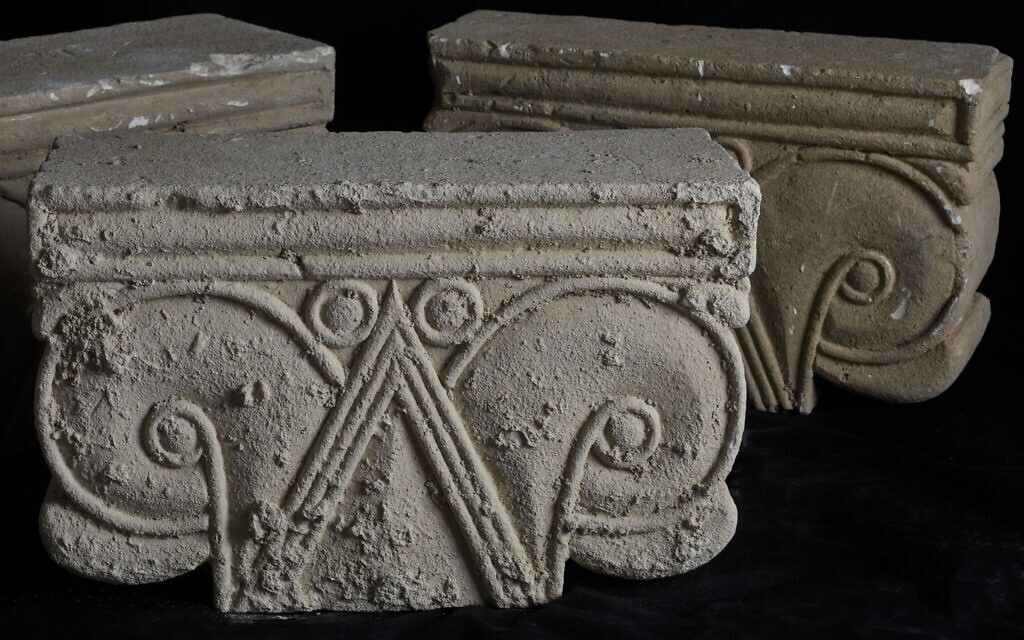Tyndale Bulletin 71/1 (2020)
- Elijah Hixson, "Three Lost Miniatures in Codex Sinopensis (Paris, Bibliothèque nationale de France, supplément grec 1286; Gregory-Aland O/023)," 1-18
Codex Sinopensis (Paris, Bibliothèque nationale de France, supplément grec 1286; Gregory-Aland O/023) is one of the earliest examples of an illuminated gospel book. This article examines instances of transferred paint in the codex along with textual and paratextual features to identify three lost miniatures that once adorned the pages of Codex Sinopensis. Thus, our knowledge of one of the earliest cycles of miniatures in a gospel book can be extended with the addition of the three identifiable but now-lost miniatures: The Miracle of the Coin from the Mouth of the Fish (Matthew 17:24–18:4), the Parable of the Labourers in the Vineyard (Matthew 19:25–20:9), and Christ’s Entrance into Jerusalem (Matthew 21:5-12).
- Kim Phillips, "Is the Masora Circule, too, among the Scribal Habits?" 19-42
Research into masoretic biblical manuscripts (MSS) is heavily reliant on our ability to reunite fragments once belonging to the same codex, now separated one from the other in the Genizah morass, and to identify the scribes behind codices whose colophons have been lost. This task is made especially difficult by the fact that the oriental square hand in which these codices were written is highly stereotypical. Consequently, the paleographer must rely on paratextual features: non-textual features that accompany the biblical text itself, which form a kind of fingerprint for each MS or scribe. This article argues that the masora circule (the small circule used in these MSS to link the masoretic notes to the biblical text itself) functions as part of this unique fingerprint.
- Gregory R. Lanier, "The Critical Edition of the Greek OT and NT: Stability, Change, and Implications," 43-64
Though their respective practitioners compare notes infrequently, the fields of NT and Septuagint textual criticism share resemblances in their overall trajectory. Namely, late nineteenth- and early twentieth-century critical editions have given way to decades-long international efforts to produce major critical editions that incorporate a staggeringly larger amount of manuscript data. But how much has the critical text itself changed? This article explores the magnitude of change over the past decades of work on the Greek NT and OT, offering observations about what the tremendous stability in the reconstructed text might tell us about the field(s) in general and the quality of ancient manuscripts.
- Alan Millard, "On Some Alleged Anachronisms in the Books of Samuel," 65-74
In considering the age and historical reliability of the Books of Samuel, the detection of anachronisms can play a major part. A number that have been alleged are examined in this essay, and no good grounds are found for accepting them.
- Benjamin J.M. Johnson, "Making a First Impression: The Characterisation of David and His Opening Words in 1 Samuel 17:25-31," 75-94
David is perhaps the most complex character in all of Scripture. He has been understood in many and various ways, from a backstabbing, ruthless warlord to a pious and poetic shepherd-king. One place we ought to probe when asking the question of David’s character is his first speech. It has been noted that in the Hebrew Bible first words are particularly important moments of characterisation. In the case of David, his first words look initially to emphasise his scheming and ambition. However, the present essay will take a closer look at David’s first words and argue that they present a more complex character than may first appear.
- Seth D. Postell, "Potiphar’s Wife in David’s Looking Glass: Reading 2 Samuel 11–12 as a Reflection Story of Genesis 39," 95-114
Though the parallels between Joseph and David have been well noted, the numerous literary links between Joseph’s exemplary behaviour with Potiphar’s wife on the one hand and David’s disgraceful behaviour with Bathsheba on the other has gone by largely unnoticed. In this article, we analyse 2 Samuel 11–12 as a reflection story of Genesis 39, noting the numerous parallels and striking contrasts. Given the many allusions to Joseph in 1 Samuel, the reader expects to see only Joseph’s reflection in David’s mirror in 2 Samuel 11–12, but finds Potiphar’s wife looking back at David as well.
- Steffen G. Jenkins, "A Quotation in Psalm 109 as Defence Exhibit A," 115-136
Psalm
109 contains an infamous imprecation, which roughly half of modern
commentators identify as a quotation of an enemy curse. On the other
hand, most who detect a quotation believe it to be aimed against the
enemy anyway, in an act of poetic justice. This article assesses the
debate and offers fresh grounds for a more recent proposal. The
quotation includes not only curse, but an accusation, justifying the
curse against David. David quotes his accuser’s case, to protest that it
is the fabrication of enemies who have suborned perjury. Finally, he
prays that this plot against him would fail.
- Katharine J. Dell, "A Wise Man Reflecting on Wisdom: Qoheleth/Ecclesiastes," 137-152
This paper looks at Qoheleth’s ambivalent attitude towards wisdom and being wise. At times wisdom is his presupposition, his strength, and his benchmark for judging everything; at other times he sees its limitations and relativity in the light of divine unpredictability and human death. This is not contradictory; rather, Qoheleth weighs up proverbs and provides an interpretation of them, fulfilling the description of him in 12:9. Whilst some see the Epilogist as critical of the wise, using Qoheleth’s own words to discredit the wisdom movement, I maintain that this is not the case; rather, the Epilogue reinforces Qoheleth’s approach to the wisdom task.

